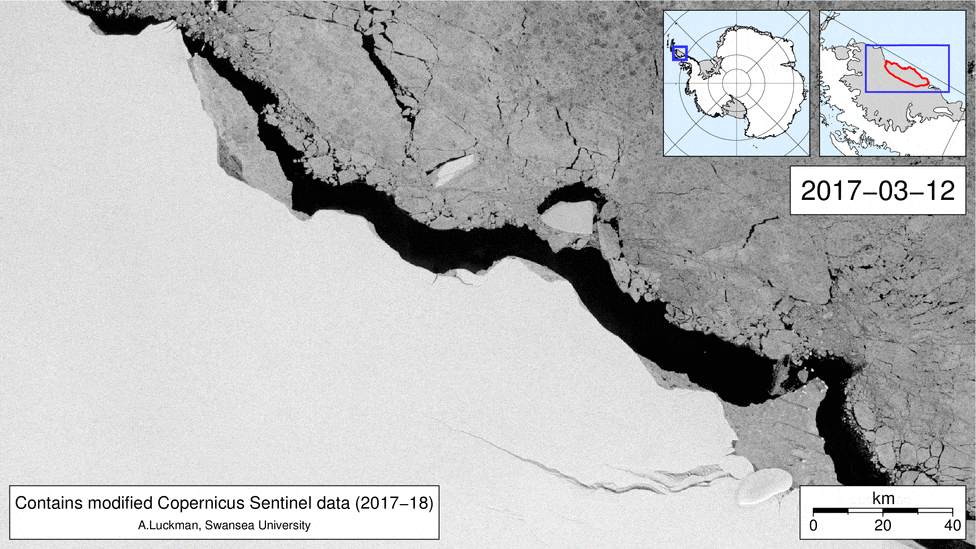Trillion-Ton Iceberg Is On The Move, Now Spinning Towards the Sea

Last year, the Larsen C ice shelf in Antarctica lost a huge chunk of ice. The ice cracked for months, and scientists closely watched the entire process until it finally broke free. They mapped the movements which were until recently, predictable and normal. The slab of ice which is the size of a state and weighs about a trillion ton started so slowly move away from its place, going back and forth.
However, it has recently started to rapidly pivot and turn. Since July, the glacier has started spinning.
Satellite images pieced together by Mark Brandon (Open University) shows how the iceberg sits at a right angle and then dramatically changes its shift. What’s the reason behind this rapid spinning?
Martin O’Leary of Project MIDAS, who has been studying the iceberg, theorizes that the iceberg could be affected by ocean currents or winds, or it might be its own fault:
“It might have been shaken loose by winds or ocean currents, or it might be that the natural thinning process (from both melting and the flow of the ice) has lifted the bottom of the iceberg off the sea bed. In any case, it looks like the berg is now a lot more free to move about, so it will probably continue to rotate, and to move out to sea.”
At the moment, because of the out-of-control swirling, scientists cannot accurately predict what would happen to the iceberg, but they believe it has a good chance of colliding with the Larsen C shelf, causing it to break off into smaller chunks and then spread into the sea.
What’s really exciting for some other scientists like Phil Trathan, who is a marine ecosystem researcher, is what will happen once the iceberg goes into the sea and leaves a vacant place:
“You’ll have sunlight, you’ll have phytoplankton, and you’ll begin to get zooplankton and fish in there pretty quickly. So, it will be sort of a chain reaction — as you get productivity happening then you’ll get more species coming in, and so there will be quite significant changes over relatively short time scales.”
Researchers will be able to study the new ecosystem which is off-limits for commercial fishing operations for at least two years, maybe even a decade.

0 comments